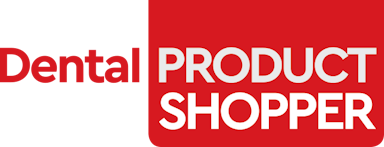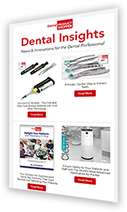The LinkIt platform brings digital imaging, planning, and design systems together in one seamless, secure, end-to-end workflow—reducing inefficiencies, boosting transparency, and setting the stage for smarter, AI-driven dentistry
Managing a modern dental practice typically means juggling multiple systems—from practice management software to scanners, sensors, and design tools. Too often, this creates a fragmented workflow that eats away at efficiency and leaves practices struggling to track data, cases, and files across different platforms. Henry Schein’s latest innovation, LinkIt, aims to solve that problem.
Announced in August, LinkIt integrates directly into Dentrix, Henry Schein One’s practice management software, and enables seamless interoperability with leading digital imaging, planning, and design platforms. The goal: eliminate repetitive data entry, reduce inefficiencies, and create a single, cohesive digital workflow for the dental team.
“Most practices have multiple brands—they might have a DEXIS sensor, Planmeca cone beam, a 3Shape scanner—and they’re going from one system to another and it’s really complicated because they’re operating across siloed systems,” explained Mackenzie Richter, Vice President of Global Commercial Digital Workflow Solutions at Henry Schein. “Between Henry Schein One and Henry Schein Dental, we saw an opportunity to simplify things to help our customers be a lot more effective and efficient and actually do the work they want to do.”
From One Platform, the Entire Workflow
LinkIt allows a seamless digital workflow to be initiated and tracked within practice management. Dental teams can launch intraoral scanning software directly from Dentrix. Case details entered once flow through the entire process, from scan to design to fabrication. The resulting STL file or imaging data automatically syncs back to the patient chart, eliminating the need to jump between multiple systems.
Dr. Ryan Hungate, Chief Clinical & Strategy Officer at Henry Schein One, emphasized the impact on both efficiency and case transparency.
“As an orthodontist, one of the most common questions I’d ask was, ‘Where’s my lab case?’ Because there was no transparency. Over time, the industry had built these highways that were disparately connected,” he said. “Now, it’s all pulled together. Everything is tracked in one place.”
This visibility extends to financial workflows as well. Once a case is submitted, LinkIt can trigger claim filing, generate narratives, and even integrate with insurance predetermination systems. According to Dr. Hungate, this helps reduce the estimated 12% of claims that never get filed—a significant loss of revenue for many practices.
Time Savings That Add Up
One large group practice piloting LinkIt has been scanning every patient at every visit. Richter shared that their results show an average of 8 minutes saved per patient simply by eliminating redundant data entry and upload/download tasks. Multiplied across a busy schedule, those minutes quickly add up to hours saved every week.
It’s the accumulation of small tasks and interruptions that often drag practices down, Dr. Hungate noted. “This starts to eliminate those kinds of problems and what winds up being ‘death by a thousand paper cuts,’” he said. “We can avoid that now.”
Setting the Stage for Smarter Systems
A key advantage of consolidating workflows is how it empowers artificial intelligence. Dr. Hungate noted that AI is only as smart as the data it has. By linking everything—scans, images, lab cases, claims—the platform creates a data-rich environment where AI can help make smarter, faster decisions.
Already, LinkIt integrates with platforms such as Planmeca, Medit, and Dentsply Sirona’s DS Core, with more connections on the horizon. Beyond imaging and scanning, the roadmap includes connections to printers, mills, and AI design platforms for night guards, restorations, and orthodontics.
A More Confident Patient Experience
While LinkIt makes life easier for dental teams, it also helps patients better understand treatment. By centralizing and visualizing data, clinicians can show patients AI-driven simulations or crown designs directly within the workflow.
“I used to work in a dental practice,” Richter said, “and so many times the dentist would walk out of the room, and the patient would turn to me and ask, ‘Do I really need that?’ They couldn't wrap their mind around it, so I would talk to them about what the doctor had explained. But if we can now say, ‘Here's all the information, here's what you need, here's what you were preapproved for and what insurance is going to cover,’ it just makes that whole experience so much less stressful for everyone.”
The Road Ahead
LinkIt is still evolving, but Richter and Dr. Hungate see it as the foundation for a fully connected dental ecosystem—one that is brand-agnostic, interoperable, and scalable. Whether a practice wants to design in-house, print or mill chairside, or send cases to a lab, the workflow begins and ends in the same place.
“Our vision,” Richter summarized, “is that when a team turns on the lights in the morning, they only need to open one system: practice management. From there, everything else—imaging, scanning, design, billing—flows seamlessly and securely.”






